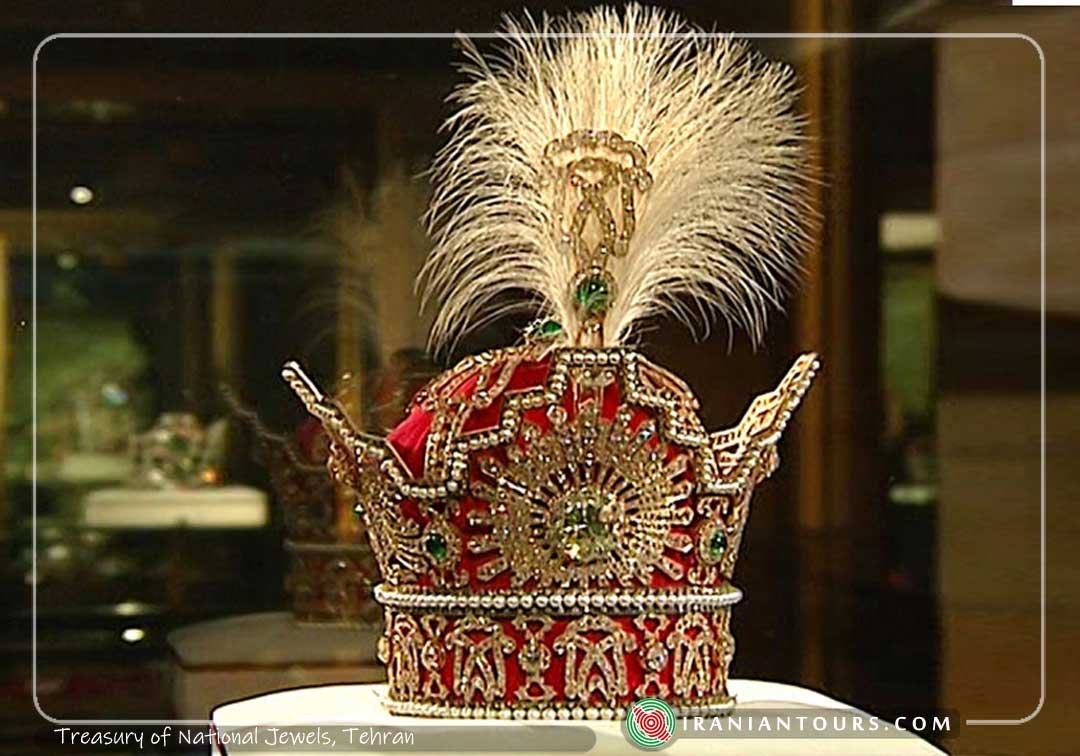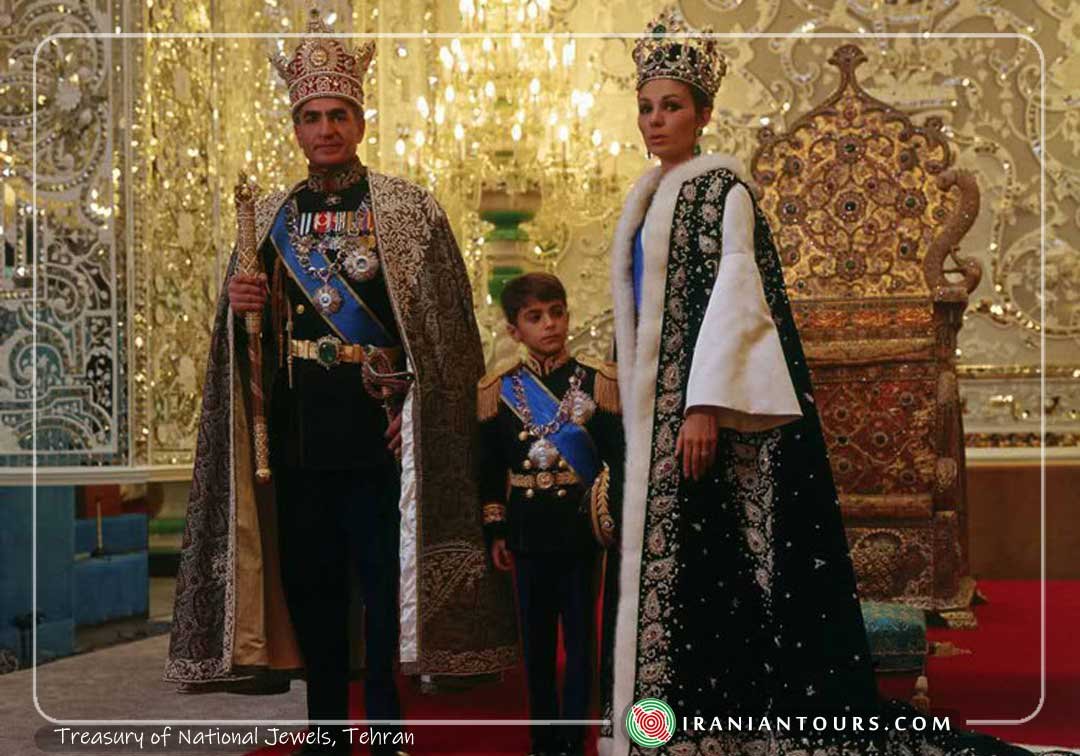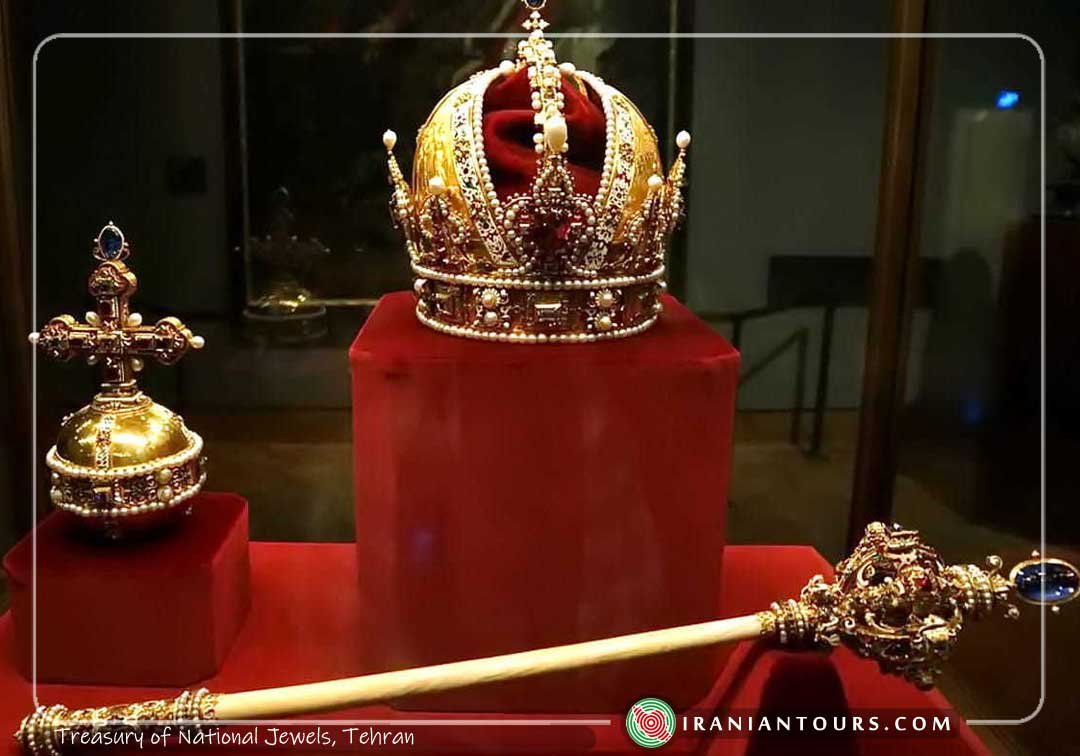The Treasury of National Jewels
This unique museum, also known as the Iran Jewels Museum, exhibits the crown jewels of Iran. The Imperial crown jewels of Iran include elaborate crowns, thirty tiaras, and numerous aigrettes, a dozen bejeweled swords and shields, a number of unset precious gems, numerous plates and other dining services cast in precious metals and encrusted with gems, and several other more unusual items (such as a large golden globe with the oceans made of emeralds) collected by the Iranian monarchy from the 16th century (Safavid dynasty) on.
The unique collection of national jewels mirrors the grand history of Iran, reminding the visitor of the victories, failures, honors, and dishonors this great country has gone through. Wander through the glitter of these gems, representing Iranian art, culture, and opulence. The recorded history of the treasury of jewels began with the Safavid monarchs. However, a great amount of these jewels were scattered or stolen during later periods. For example, when Mahmud Afqan invaded the country and defeated the last Safavid king, Shah Sultan Hossein, a part of these jewels were sent to India. Then, Nader Shah Afshar tried to recollect the looted parts, but his assassination in 1747 put an end to his efforts. The reason for this failure was that one of his commanders plundered the treasury he had made great efforts to recollect.
Maybe the most important item was the diamond named Kuh-e- Nur (Mountain of light) which never returned to Iran. Being the largest cut diamond in the world, Kuh-e Nur finally found its way to the British crown. During the rule of Reza Shah, the first Pahlavi king, a major part of the treasury was transferred to Melli Bank to bolster the monetary system of the country. So, the jewel collection was moved to its present location in 1955, and was deposited with the Central Bank after its establishment in 1960.
The collection encompasses various diamonds ranging from less than one carat to 152.16 carats. This treasure includes plate covers, vases, candelabrums, hookah jugs, and combat equipment like sword, dagger, quiver, and buckler, all encrusted with precious gems. It also contains gold belts, hats, watches, cloaks, and other accessories like brooches, watches chains, kings’ medals, together with thrones and crowns, all showing off power and wealth.
This bewildering collection is so precious that even the world-known expert evaluators have not been able to estimate its value. It can be seen as a glimmering entrance to the sometimes dark and violent tales of history hidden behind it.
Some of the iconic pieces of this collection are:
Darya-ye Nur
The majestic diamond, Darya-ye Nur (the sea of light) is probably the most important item among Iran’s royal jewelries. Its form, weight (circa. 182 carats), and marvelous pink color make it an extremely rare diamond in the whole world. Finally, after its long journey through history, Darya-ye Nur became Naser al-din Shah’s favorite jewel. He believed that it had decorated the crown of the Great Cyrus.
Jeweled Globe
The jeweled globe, about 66 centimeters in diameter, with 51366 pieces of gem and 34 kilograms of gold, was built by the order of Naser al-din Shah and under the supervision of Ibraham Masihi.
The Sun Throne
The Sun Throne named so due to the design of sun at the back panel of the throne. Later, it was renamed as Peacock Throne (not to be confused with the Indian Peacock Throne) after Fath-Ali Shah’s wife, Tavous khanum or Taj al-Dowleh (tavous means peacock in Persian). As evidenced by the verses inscribed around the throne, it has been renovated in the time of Naser al-din Shah. This throne was kept in Golestan palace until 1981.
Golden Candlestick
The golden candlestick, made in the 19th century, which was used to decorate the Peacock Throne during ceremonies held in Golestan Palace.
Ruby Coffee Cup Holder
The ruby coffee cup holder crafted with extreme intricacy back in 19th century.
Emerald Box
An emerald box with 92 pieces of exquisite emerald, dating back to the 19th century.
Nader Throne
Nader Throne which was made under the reign of Fath-Ali Shah (1798-1834) and, despite its name, bears no relation to Nader Shah. The name ‘Nader’ (meaning ‘rare’ in Persian), probably implies the rarity of the piece. This throne is composed of 12 parts and 26733 pieces of jewel adorn it. It was used for Mohammad Reza Pahlavi’s coronation ceremony. ”
Crown of Fath-Ali Shah
The crown of Fath-Ali Shah named Taj-e Kiani (Kiani Crown), which is decorated with emeralds, diamonds, rubies, and pearls; it was also worn by the subsequent Qajarid Kings.
Crown of Farah Pahlavi
The crown used by Farah Pahlavi, made in 1967, with 1469 pieces of diamond, 36 pieces of emerald, 105 pieces of pearls, 2 spinels, and 34 superb rubies brought from Myanmar.
Pahlavi Crown
The crown used by Rezā Khān and Mohammad Reza Pahlavi named Taj-e Pahlavi (Pahlavi Crown), which is a red velvet crown decorated with 3380 pieces of diamond, 5 pieces of emerald, 368 pearls, and 2 sapphires. It is designed after the Sassanid crowns.




